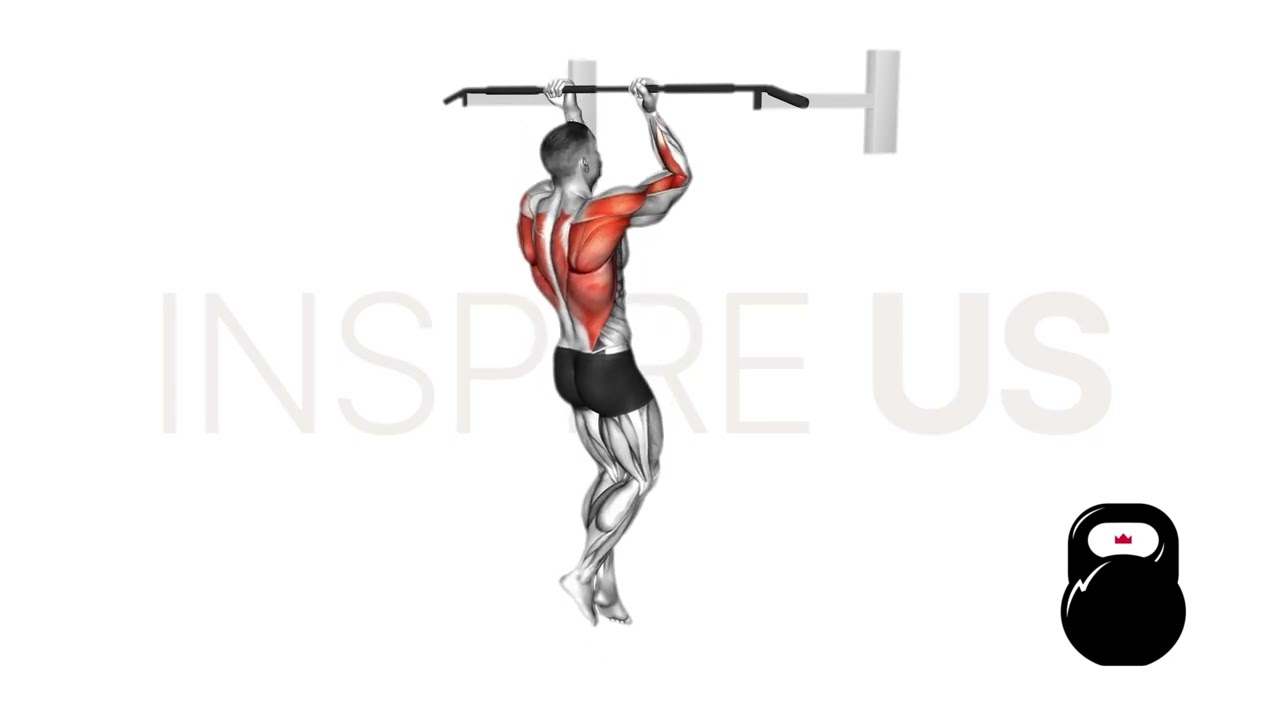Chin Ups: Benefits, Muscles Worked, and More
Very few calisthenic exercises have reached the level of fame seen in the chin-up; a status that is decidedly well earned, considering the movement’s effectiveness at building up back-and-bicep muscle mass.
But before going ahead and throwing the chin-up into your pull day workout, it’s a good idea to read onwards and see why the chin-up is considered to be so effective - and how best you can take advantage of its many benefits.
The chin-up is a bodyweight exercise involving the lifter pulling themselves upwards as they hold a pull-up bar in a supinated grip. It is most often employed for building mass and strength in the biceps and latissimus dorsi, but can also be used for a number of more specific training goals as well.
What is the Chin-Up?
From a more technical perspective, the chin-up is a multi-joint compound exercise that makes use of elbow flexion, scapular retraction and biased external shoulder rotation to train the muscles of the arms and back.

Chin-ups see use in a variety of training disciplines and modalities, but are most often employed by athletes and bodybuilders due to their capacity for highly dynamic training volume and carryover to real-world athletic activities.
Who Should do Chin-Ups?
Chin-ups are relatively simple and accessible to anyone with enough upper body strength to perform them correctly. As such, the majority of intermediate weightlifters and athletes may include chin-ups in their training.
Novices or individuals of particularly heavy weight may wish to instead perform assisted chin-ups or other vertical pulling exercises of lesser intensity.
How to do Chin-Ups
In order to perform a repetition of the chin-up, the lifter will first need to enter a dead hang stance by grasping a pull-up bar over their head, hands set shoulder-width apart in a supinated grip.
Then, contracting the biceps and lats, the lifter will bend at the elbows and draw themselves upwards. The core must remain contracted throughout the repetition so as to keep the lower body from swinging.
Once the pull-up bar is below the chin, the lifter will slowly reverse the motion until they have returned to the original dead hang stance, thereby completing the repetition.
What Muscles Do Chin-Ups Work?
Chin-ups are a compound exercise, meaning that they train more than a single muscle at once. This, of course, does not equate to all of such muscles being recruited to the same level.

In order to differentiate which muscles are emphasized the most by chin-ups, the muscular recruitment set is split up into primary mover muscles (the greatest contributing muscles), the secondary mover muscles (dynamically contracted, but to a lesser degree), and the stabilizer muscles (those solely contracted isometrically).
Primary Mover Muscles
Chin-ups primarily target the biceps brachii, latissimus dorsi, trapezius, rhomboids and the teres muscles. Each of these muscles is worked to a highly intense and dynamic capacity, but it is the biceps and latissimus dorsi that are focused upon the most.
Secondary Mover Muscles and Stabilizers
In terms of secondary muscular recruitment, chin-ups will also work the brachialis and brachioradialis - as well as the posterior deltoid head.
Stabilizing muscles utilized by chin-ups further include the erector spinae, the muscles of the core, and the pectoral muscles of the chest.
What are the Benefits of Doing Chin-Ups?
All forms of properly-executed resistance exercise are beneficial, regardless of what specific movement is being performed.
However, the chin-up is uniquely capable of producing a select group of benefits that may not be so easily found with exercises of a different nature - hence the popularity of the chin-up among weightlifters.
Excellent for Building Mass in the Back and Biceps
Chin-ups feature a wide range of motion and high capacity for volume - all without the need for additional resistance. This makes them uniquely effective for building muscle mass in the biceps and upper back, especially for exercisers without access to resistance training equipment.
In order to maximize the muscular hypertrophy derived from chin-ups, it is important to perform them with a proper range of motion and time under tension in mind. Rushing through the eccentric phase or failing to return to the original dead hang stance may reduce the effectiveness of the exercise.
Easier and More Accessible Than Pull-Ups
Novice exercisers may find themselves unable to perform pull-ups due to the inherent difficulty of the exercise.
Fortunately, chin-ups are considered to be easier and more accessible than pull-ups for two distinct reasons; the first being that the muscles of the arms are recruited more intensely with chin-ups and therefore may produce more force - as well as the fact that chin-ups feature a relatively shorter range of motion.
Both make the exercise comparatively easier than the pull-up, and can allow novices or lifters seeking greater volume to still target the same muscle groups.
Carryover to Other Vertical Pulling Activities
Because chin-ups are also considered to be a vertical pulling exercise, they can help train the body and nervous system for executing actions of a similar nature. This can include activities like rock climbing, rappelling and a number of different types of martial arts.
Chin-ups achieve this sort of carryover by not only strengthening muscles that are utilized in said activities, but also by reinforcing the joints of the body towards vertical resistance - and by familiarizing the lifter themselves with the necessary movement pattern of vertical pulling.
For even greater specificity or carryover, lifters may substitute chin-ups with exercises that are more similar to their chosen sport; Kipping pull-ups or muscle-ups are a few good examples of such alternatives.
Acts as a Progression Step to Muscle-Ups, Pull-Ups and the Front Lever
Chin-ups are considered to be a progression step to a number of more difficult calisthenic exercises, including the conventional pull-up, the highly advanced muscle-up and the front lever.
Each exercise features a host of similarities to the chin-up, and can generally be established by performing the chin-up alongside other exercises that help replicate the movement in a less intense capacity.
Common Chin-Up Mistakes
While anyone can tell you that the chin-up is moderately complex in terms of technique, there are several more common mistakes that are best avoided so as to ensure the exerciser is performed safely and effectively.
“Kipping” or Using Excessive Momentum
Perhaps the most common mistake seen when performing chin-ups is the lifter generating excessive momentum, thereby robbing their muscles of potential training stimulus and negating the entire point of the exercise.
Lifters most often create momentum by failing to control their lower body during the ascending phase of the repetition, or otherwise by dropping too suddenly from the apex of the movement.
Either case will greatly reduce the intensity and length of time in which the upper body’s muscles are contracted, as well as potentially result in injuries of the shoulder girdle joint.
Each repetition of the chin-up should be performed in a slow and controlled manner, with additional attention paid to ensure that the muscles of the back and biceps are adequately emphasized throughout the proper range of motion.
Poor Range of Motion
Most often encountered with lifters who are unable to perform a full chin-up repetition - performing chin-ups in a manner that does not raise the head above the pull-up bar or begin at full arm extension will reduce the effectiveness of the exercise as a whole.
Different muscles are recruited at different points of the chin-up range of motion, and failing to maximize said range can cause muscles to be poorly contracted, if not skipped entirely.
In order to avoid negating the muscular benefits of the chin-up, each repetition should begin and end with the arms in a state of full extension (the “dead hang” position), as well as feature the pull-up bar being beneath the chin of the lifter after the ascending phase of the movement.
Arching the Upper Back or Rounding the Shoulders
During the chin-up, lifters may make the mistake of allowing their shoulder blades to roll in a forwards-and-upwards direction, or what is otherwise known as scapular protraction. From an external perspective, this will appear as if the shoulders are rounding forwards, giving the upper back a hunched or “arched” appearance.
This is most often a sign of poor back muscle recruitment, and can increase the risk of a number of shoulder-related injuries - not to mention also reduce the emphasis on the muscles of the trapezius and rhomboids.
In order to prevent the shoulders rotating forwards, the lifter should ensure that their shoulder blades remain protracted and that the muscles of their upper back are the primary movers during the chin-up, rather than the shoulders.
Improper Hand Width Along the Bar
Hand placement is especially important with chin-ups, as the hands are in a supinated position and as such will place the biceps brachii at greater risk of injury.
Chin-ups should be performed with the hands set at shoulder width distance from one another, with the lifter taking care not to set them too far apart, as doing so can cause poor biceps contraction and potentially dangerous shoulder rotation.
Chin-Up Variations and Alternatives
In the event that the chin-up is considered to be unsuitable for the lifter’s training goals (or just too hard), there are a few variations and alternatives that can fulfill its role in a workout program.
1. Assisted Chin-Ups
For lifters who cannot perform conventional chin-ups, the use of an assisted chin-up may act as a progression step towards doing so.
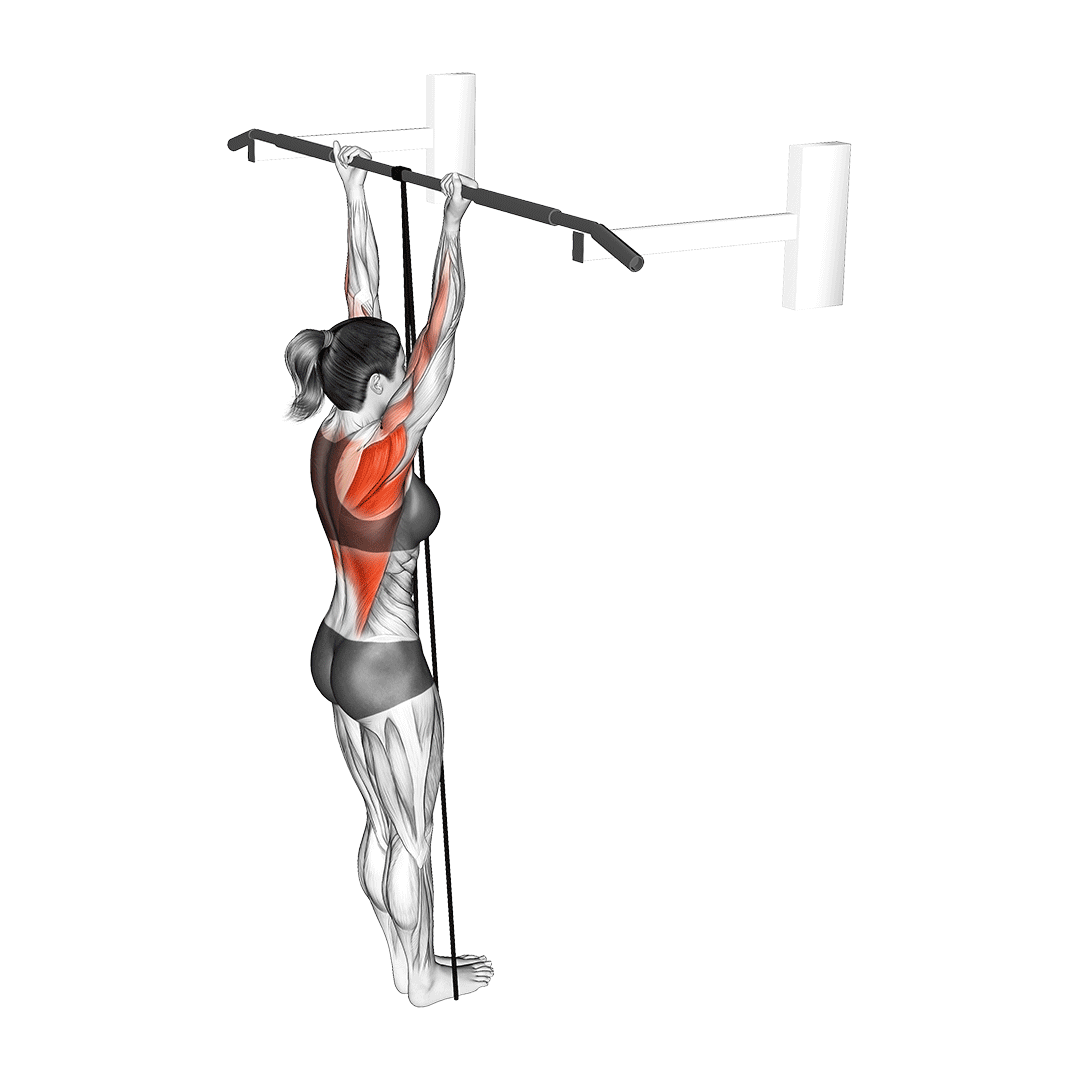
This is primarily achieved through the use of an assisted pull-up machine that provides counter-resistance to the body’s own weight, thereby reducing the load placed on the muscles of the upper body.
However, lifters without access to such a machine may also make use of resistance bands to help recreate much the same effect.
2. Weighted Chin-Ups
In the opposite direction of assisted chin-ups, lifters who find the conventional chin-up to be too easy may add further resistance through the use of weighted fitness equipment.
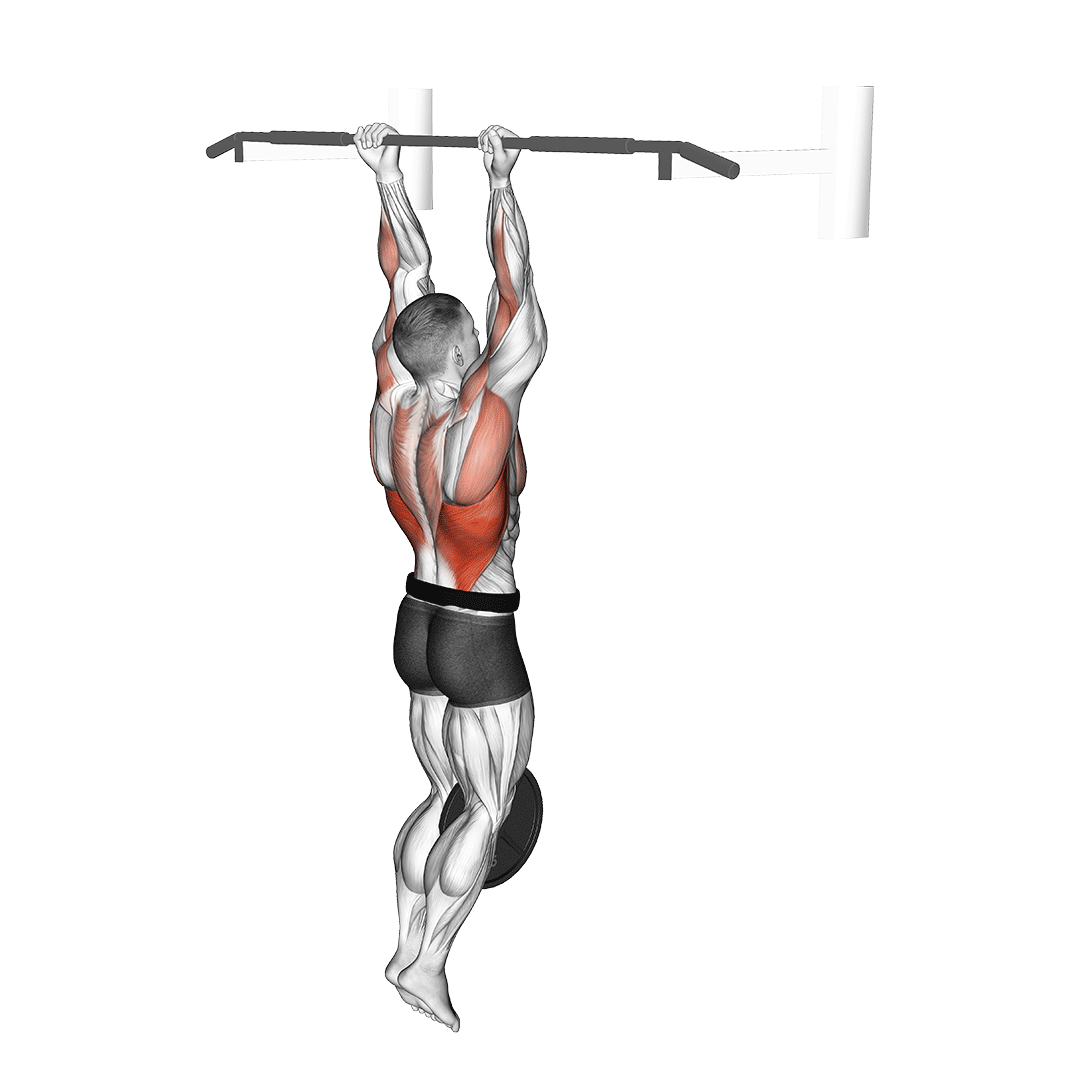
Such equipment will make the exercise generally heavier as a whole, allowing the lifter to continue the flow of progressive overload without the need for an excessive amount of volume or the use of more technically-complex progression exercises.
3. Neutral Grip Pull-Ups
For a more even distribution of training stimulus among the muscles of the arms and back, lifters may wish to substitute conventional chin-ups with the neutral grip pull-up.
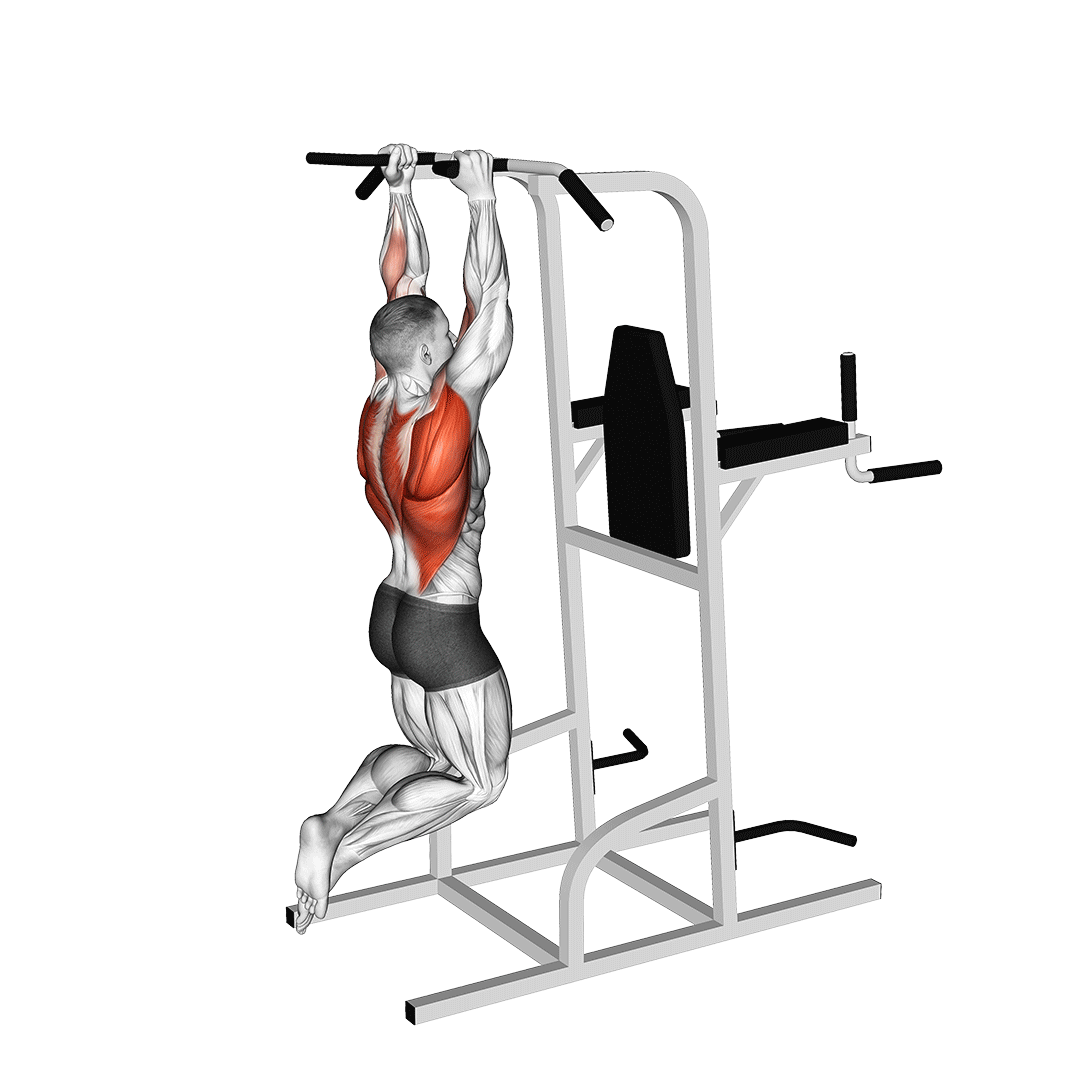
The neutral grip pull-up - like the chin-up - is a multi-joint compound movement that features targeted recruitment of the biceps and other elbow flexors, as well as the entirety of the upper and middle back musculature.
Unlike chin-ups, neutral grip pull-ups will feature the hands gripping a pair of bars in a neutral grip - thereby also recruiting muscles like the brachialis and brachioradialis in a dynamic fashion.
When to Use Chin-Ups Instead of Pull-Ups
Chin-ups are primarily picked over pull-ups for two purposes; the first being in cases where the lifter wishes to emphasize the muscles of their arms more, and the latter when the pull-up is considered to be too difficult from either a physical or technical standpoint.
For Arm Growth
In order to use chin-ups as an alternative to pull-ups for the purposes of arm muscle development, they are best paired with exercises like the bicep curl and hammer curl, as both accessory movements will only add to the training stimulus of the chin-up.
As a Pull-Up Progression Step
However, if the lifter is using chin-ups as a substitute to pull-ups due to exercise difficulty, it is best to keep the volume low and to ensure that each repetition is performed with the utmost attention paid to form.
If they cannot maintain proper form throughout the course of a set, a better option would be to perform assisted pull-ups or negative/eccentric pull-ups.
Frequently Asked Questions (FAQ)
Are Chin-Ups Easier Than Pull-Ups?
In certain aspects - yes, the chin-up may be considered easier to perform than the pull-up.
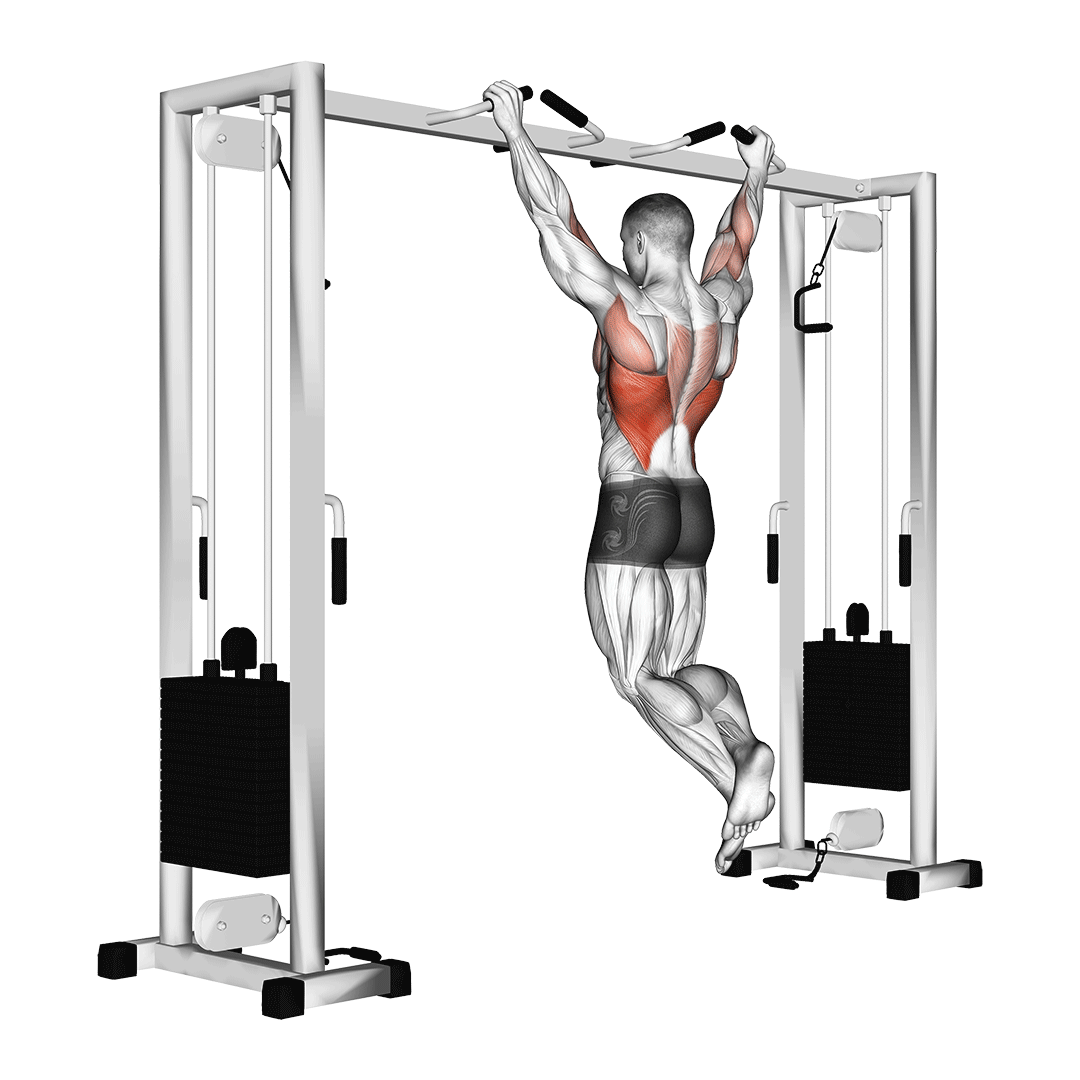
In particular, lifters with a more arm-dominant physique or those who are unfamiliar with the mechanics of vertical pulling exercises will find that chin-ups offer a far easier workout than their pronated-grip counterpart.
Are Chin-Ups Easier if You Weigh Less?
Yes - unless specifically added, chin-ups will only use the lifter’s own weight as a source of resistance during the exercise. Obviously, this means that if the lifter weighs a lesser amount, then the chin-up will also weigh a lesser amount.
However, it’s important to consider other factors like proportions, strength/weight ratio and even technique when assessing chin-up intensity and difficulty. Just because an individual is heavier, it does not mean that they are worse at performing chin-ups.
How Can I Get Stronger for Chin-Ups?
If you cannot yet perform a full chin-up repetition with good form, one step to take is to perform assisted chin-ups with the use of an assisted pull-up machine. Other exercises you can try are the lat pulldown and the negative/eccentric pull-up.
Final Thoughts
Keep in mind that the chin-up is more versatile when seen as a volume-based exercise, rather than one governed primarily by resistance. Try playing around with its repetition scheme to get the most effective training possible.
If you find that you have trouble maintaining correct form, or are unsure of how to perform the chin-up correctly - its a good idea to seek out the advice of a professional athletic coach.
References
1. Hewit, Jennifer. (2018). A Comparison of Muscle Activation during the Pull-up and Three Alternative Pulling Exercises. Journal of Physical Fitness, Medicine & Treatment in Sports. 5. 10.19080/JPFMTS.2018.05.555669.
2. Youdas, James & Amundson, Collier & Cicero, Kyle & Hahn, Justin & Harezlak, David & Hollman, John. (2010). Surface Electromyographic Activation Patterns and Elbow Joint Motion During a Pull-Up, Chin-Up, or Perfect-Pullup™ Rotational Exercise. Journal of strength and conditioning research / National Strength & Conditioning Association. 24. 3404-14. 10.1519/JSC.0b013e3181f1598c.

